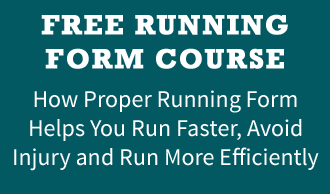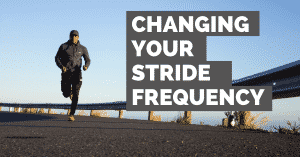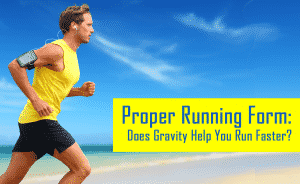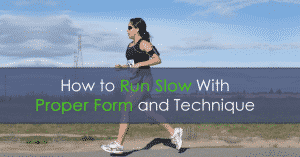“Some people create with words, or with music, or with a brush and paints. I like to make something beautiful when I run. I like to make people stop and say, “I’ve never seen anyone run like that before.” It’s more than just a race, it’s a style. It’s doing something better than anyone else. It’s being creative.”
– Steve “Pre” Prefontaine, middle and long-distance running sensation who at the time of his tragic death in 1975 at just 24 years old held every American record between 2,000 and 10,000 meters.
Together with other running legends of the time Frank Shorter and Bill Rodgers, Prefontaine played a huge part in inspiring the 1970s “running boom”, and nearly four decades on the search to find the supreme style that will help runners to “do better than anyone else” is as alive as ever.
Though regular visitors to Runners Connect will be familiar with our strong belief that there is a rarely a “one-size-fits-all” prescription when it comes to running, much can be learned from observing and examining the different schools of thought that emerge as elite coaches and biomechanics experts pursue excellence.
Differences in our anatomy, physiology, lifestyles and experiences mean that what works well for one runner will not necessarily do so for another, and indeed a successful coach could well be defined by their ability to look at the athlete in front of them and then select appropriate elements from the various successful running styles that exist.
In this article, we will take a look at two contrasting theories on how PROPULSION is generated in running and how they lead to the promotion of different running techniques supported by different coaching cues and drills. As you read, bear in mind that I am not advocating any conscious attempt to modify your form whilst out running. Safe, effective modification to running form comes via drills and ancillary strength & conditioning, not by trying to change an isolated movement whilst out running.
Push
For many, the role of the Gluteus Maximus in hip extension is seen as paramount in driving the body forwards during running. This hip extension begins the moment the foot starts its journey towards the ground. Elite run coach Bobby McGee can be seen explaining this in his USA Triathlon Training Series stressing that in order for elastic return (stretch reflex) to occur the leading leg can not just “fall” to the ground. He compares propulsion to the loading of a pogo stick, with the propulsive phase of the leg action being hip extension whilst the leg is unloaded. The leg and knee extend by pushing the foot downwards under the body using the glute & quad muscles from the highest position the knee reached, until the foot is applied to the surface. McGee points out that force plate research shows how a downward force must be applied to load the leg for rapid return:
“The trick is to apply the downward extension of the leg early enough, i.e. from the point where the knee has reached its highest point on the forward swing phase til the foot contacts the surface. As soon as contact with the ground is made, the structure is held rigid so that the musculature can load elastically and when momentum aided by the correct lean places the body sufficiently past its centre of mass, the spring can unload and power the body forward.”
Steve Magness, Head Cross Country Coach at University of Houston , points out that often the mistake is made to try and get the foot off the ground as quickly as possible. While having a short ground contact time is beneficial, it needs to be the result of transferring force faster rather than trying to get quick with the foot.
“Loading up the foot means allowing it to move through the cycle of initial contact to fully supporting the body.”
Magness argues that a combination of the stretch reflex and the basic passive mechanical properties of the lower leg means that the lower leg will lift off the ground and fold up (towards the buttocks) without the need for any conscious hamstring recruitment. How close the lower leg comes to the buttocks depends on the amount of hip extension and should not be actively enforced.
Pull
Other schools of thought do not give as much importance to the role of the Gluteus Maximus in propulsion during running. A good example can be seen in the teachings of the Pose Method of running, developed by 2-time Olympic Coach Dr. Nicholas S. Romanov. Romanov explains:
“Glutes keep your hips, i.e. your GCM (general centre of mass) stable, centered and straight – exactly where the hips should be during running. That’s it. If anybody assigns any other “important role” to the glutes’ work in running, he or she simply does not know or understand the anatomical and biomechanical functions, characteristics and intended work of the glutes. Glutes, as well as any other muscles or muscle groups, do not directly create the propulsion of the body forward.”
The Pose Method believes efficient propulsion is achieved by making use of gravity. The theory is that by attaining optimum body alignment and lean angle (the “pose”), the body “falls“ to a certain point (a critical range from ~5° to ~30° depending on the athlete’s objectives), which when combined with a suitably timed “pulling” of the weighted foot (a swift hamstring contraction pulling the foot towards the buttocks) the runner manages to swiftly change support to the other foot, and so the cycle repeats.
The “pull” of this “Pose-Fall-Pull” technique is said to be the only part of running that requires effort, arguing that the traditional teachings of pushing in order to maximise hip extension waste energy and are counter-productive. We can see how this contrasts with the methodology described earlier by McGee and Magness. In the words of Dr. Romanov:
“In the Pose Method, the concept of gravity as a motive force for the forward movement is the most fundamental one, and the data from the extensor’s paradox article confirm this idea. / The commonly accepted understanding of the leg extension as a forward propulsive force in running is not supported by the data of the electrical activity of the muscles responsible for the knee extension in this research. But at the same time it did not come to any conclusion about the role of gravity, as well. / Most runners sincerely believe in ‘push off efficiency’ and its necessity in order to run, because of their perception and seemingly true visual appearance.”
Discussion
The initial obstacle that people often have with the PULL theory presented by Pose is the concept that gravity can help horizontal propulsion. After all, most of us recall being taught that gravity pulls you down to the earth, so how it can help you move forward (unless of course you are running downhill)?
- Understanding the concept of gravity as a motive force for forward movement is, as Romanov states, fundamental to Pose but for the purpose of this article I suggest we put it aside for now and focus on just the action of PULLING.
- The PULL is essentially a swift hamstring contraction at the end of midstance to aid rapid lifting of the toe off the ground as opposed to trying to push off. Though some translate that as an effort to pull the foot right up to the buttocks, it is worth pointing out that in Pose the “pull” is only meant to be enough to break ground contact.
- In practice, it does seem true that excessive focus on pushing can lead to especially beginner runners maintaining ground contact time for too long, developing a slower cadence and potentially overstriding.
- Late pushing can also increase vertical propulsion to an extent that energy is being wasted. For athletes susceptible to this, the PULL method could be a useful cue to avoid such over-pushing. However, if you are dealing with a runner who has a high cadence but is failing to apply much force during each stride, encouraging a PULL may not help.
Canute’s Efficient Running site provides an interesting theory into how the PULL method achieves a shorter time in stance phase. (For those of you interested in a detailed, objective look at the Pose Method, I recommend a look through Canute’s site.) It suggests that the “conscious focus on rapid lift off leads to tensioning of the major muscles of the leg at point of impact thereby facilitating efficient capture and recovery of impact energy via elastic recoil.”
This links in with reasoning given by McGee and Magness in focussing on PUSH, and as Canute mentions later in his article reigning Olympic champion Usain Bolt (whose style is said by advocates of Pose to exemplify the effectiveness of the Pose Method) describes his own focus whilst running as “After completing the drive, get tall, knees up, dorsiflex, get your toes up, plant, push again.” Canute goes on to suggest that for less finely tuned runners, conscious focus on pushing can result in too long a delay on stance so in other words he does not recommend it for everybody.
Conclusions
The aim of this brief look at two differing schools of thought has not been to say one is better than the other. You do not need to know any of the above in order to run. However, running is a skill and for those of you looking to improve your distances and times, you will eventually need to consider your running technique. In a world where so much information is available for free at the click of a button, it is easy to become overwhelmed with an abundance of contrasting advice and promises.
Examining different theories like we have done above reinforces our belief that there is no one running style that can guarantee you success, no super-secret, hidden formula that will transform you into a running god or goddess. What you can look for however is a coach who will look at YOU as an individual and then select appropriate elements from the various successful running styles that exist.
There is no one optimum way to run, but every runner has an optimum way of running inside them. Movement specialist Ben Cormack of Cor-Kinetic.com summed it up nicely the other day on Twitter:
“The role of a coach or trainer is not to fit you into a system but to rather fit the system around you.”
If you’re interested in learning more about how to improve your own running form and develop the most efficient stride for YOUR biomechanics, signup for our 6-week online form course. The online course will help you run with proper form by teaching you the science of running biomechanics and provide you with a simple-to-follow, progressive set of exercises, drills and mental cues to help you make lasting changes to your form.
I hope you have found this insight stimulating and look forward to seeing the discussion continue through your feedback and comments.
Happy running!
Matt Phillips is a Running Injury Specialist & Video Gait Analyst at StrideUK & Studio57clinic. Follow Matt on Twitter: @sportinjurymatt
References
http://www.scienceofrunning.com/2010/08/how-to-run-running-with-proper.html
2. McGee, B.: Triathlon: The Run, Volume 4 – USA Triathlon Training Series http://www.youtube.com/watch?feature=player_embedded&v=GSGzqkjrWRA
3. Romanov, N.: The Role Of The Glutes In Running. 2007
http://www.posetech.com/training/archives/000518.html
4. Romanov, N.: The Extensor Paradox In Running. 2005
http://www.posetech.com/training/archives/000262.html
5. Romanov, N.: Pose-Fall-Pull Concept (2005)
http://www.posetech.com/training/archives/000157.html
6. Huntley, T.: Pose Running: Is it Appropriate for Sprinting? (2012)
http://myathleticlife.com/2012/02/pose-running-sprinting/
7. Canute.: Does Usain Bolt run Pose style? (2010)
http://canute1.wordpress.com/2012/03/11/does-usain-bolt-run-pose-style/








6 Responses
The first one (push) seems to have logic, physics, and anatomy on its side, and accurately describes my subjective experience. Fwiw…
Thank you, Matt, for a well-balanced article. I agree that it is for the accomplished coach to aim for effectiveness and efficiency in their runner.
I have been thinking about this for some years: the power sprinter against the efficient, flowing middle- and long-distance runner. Are their actions different?
Where a runner has an obvious problem, such as over-striding, then it may take either demonstrating an example of their style against a more desirable style or asking them to feel a more flowing movement with their leg landing more under their centre of gravity.
For the sprinter, however, you may have to assess what type of sprinter they are: power-oriented or a more gliding action. Sprinters, such as Carl Lewis, have tended to be taller and look to be flowing more. For power sprinters, who tend to be shorter and more muscular, I feel that you are trying to help them gain the most propulsive force against the ground.
Maybe, the difference is based on the length of their levers with the taller sprinter taking much longer strides and appearing, therefore, more elegant. That apart, aren’t they producing propulsion in the same way?
A great article. I think that virtually all runners from elite sprinters to recreational distance runners (but maybe not ultra-marathoners) do in fact need to exert a fairly brief and strong push against the ground, but as you imply, consciously pushing can be counter-productive and different runners will benefit from different cues to help them achieve the required sharp push. For the sprinter, the push must be very strong. As far as I am aware, many elite sprinters do focus on a strong push but very few recreational distance runners benefit from this. As you also imply, for recreational distance runners, conscious adjustment of running style without appropriate drills and conditioning often leads to grief. The only two things that I would encourage any recreational runner to focus on are checking that they are running with a fairly high cadence – typically around 180 steps/min during distance races but higher in the final lap, and ensuring that they are not deliberately trying to lengthen stride by reaching forward with the swinging leg.
I agree with Canute about reaching with the swinging leg. That’s how you get injured.
It also seems to me that the gluteus maximus and the quads are too large to not to use.
That said, when I used to ski the question at the end of the day was often “Which technique do you use?” The answer from most good skiers was “whatever worked”. The point being that most of us had 5 or 6 techniques at our command and depending on terrain, weather, and fatigue the appropriate tehnique might change. For us non elites, what’s wrong with a little of both, depending on the situation?
In watching a video of elite women marathon runners, I noticed that they use significant calf muscle force to aid foot lift off. The combination of hip flexor, hamstring, and calf muscle contraction would seem to be the most efficient method of moving the foot up and forward, since it would reduce the effort required by a single muscle.
Hi Karl,
Thanks very much for the comment. Do you by any chance have a link to the video you are referring to?
Investigation suggests that although the calf and Achilles tendon are massively involved in the propulsion stage of running, it is not through conscious active engagement. It is instead a consequence of the calf and Achilles tendon utilizing the ‘stretch shortening cycle’ and ‘stretch reflex phenomenon’. Basically, energy stored at ground impact is released at take off, often compared to a spring. The active part of the propulsion is thought to come from higher up at glute initially and then hamstring. The gastrocnemius plays a role in transmitting this force across the knee and ankle but any effort to conciously contract the calf at toe off is thought to be a waste of energy and potentially lead to calf overload.
I hope that makes sense? Thanks again for sharing, Matt.